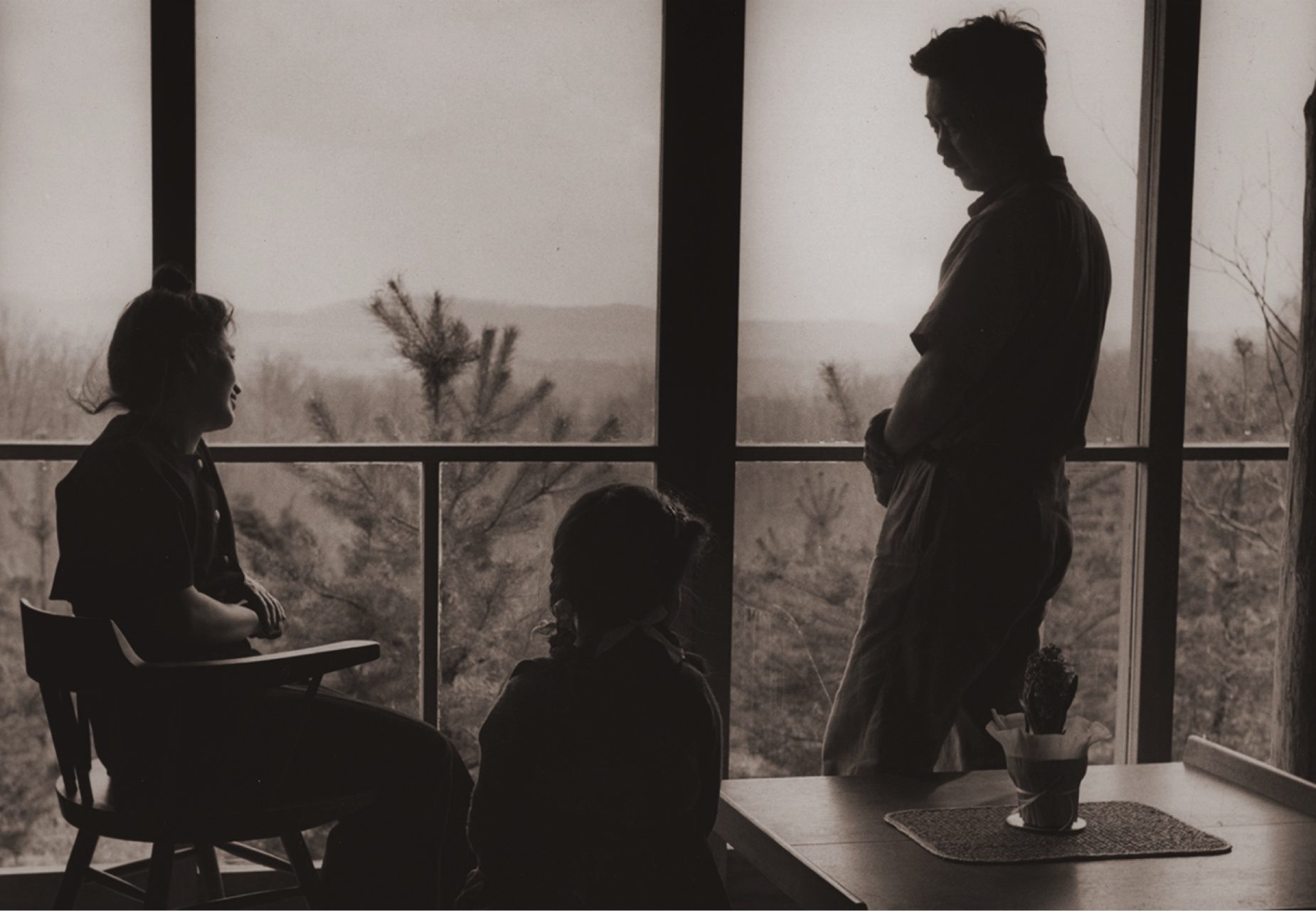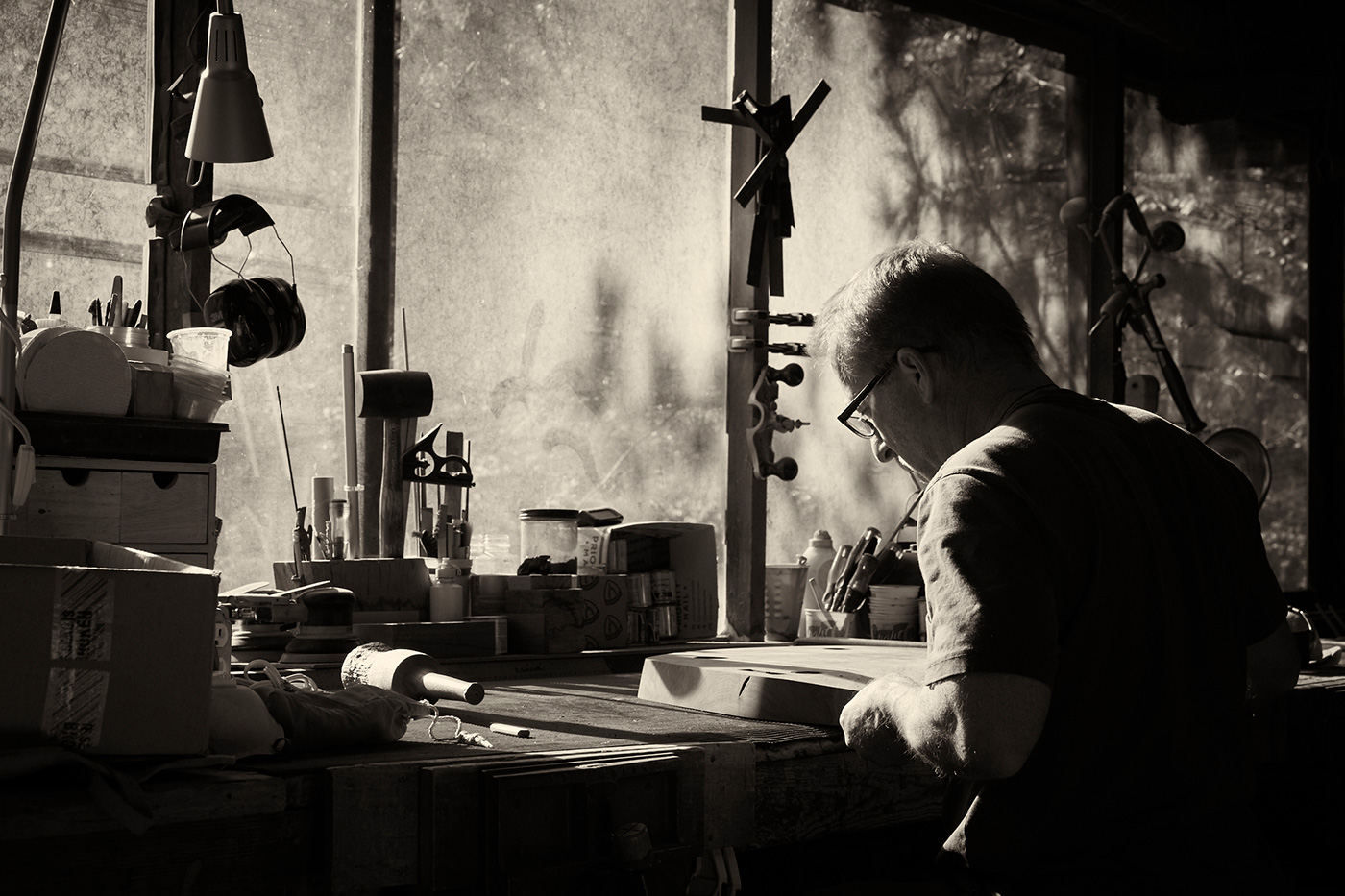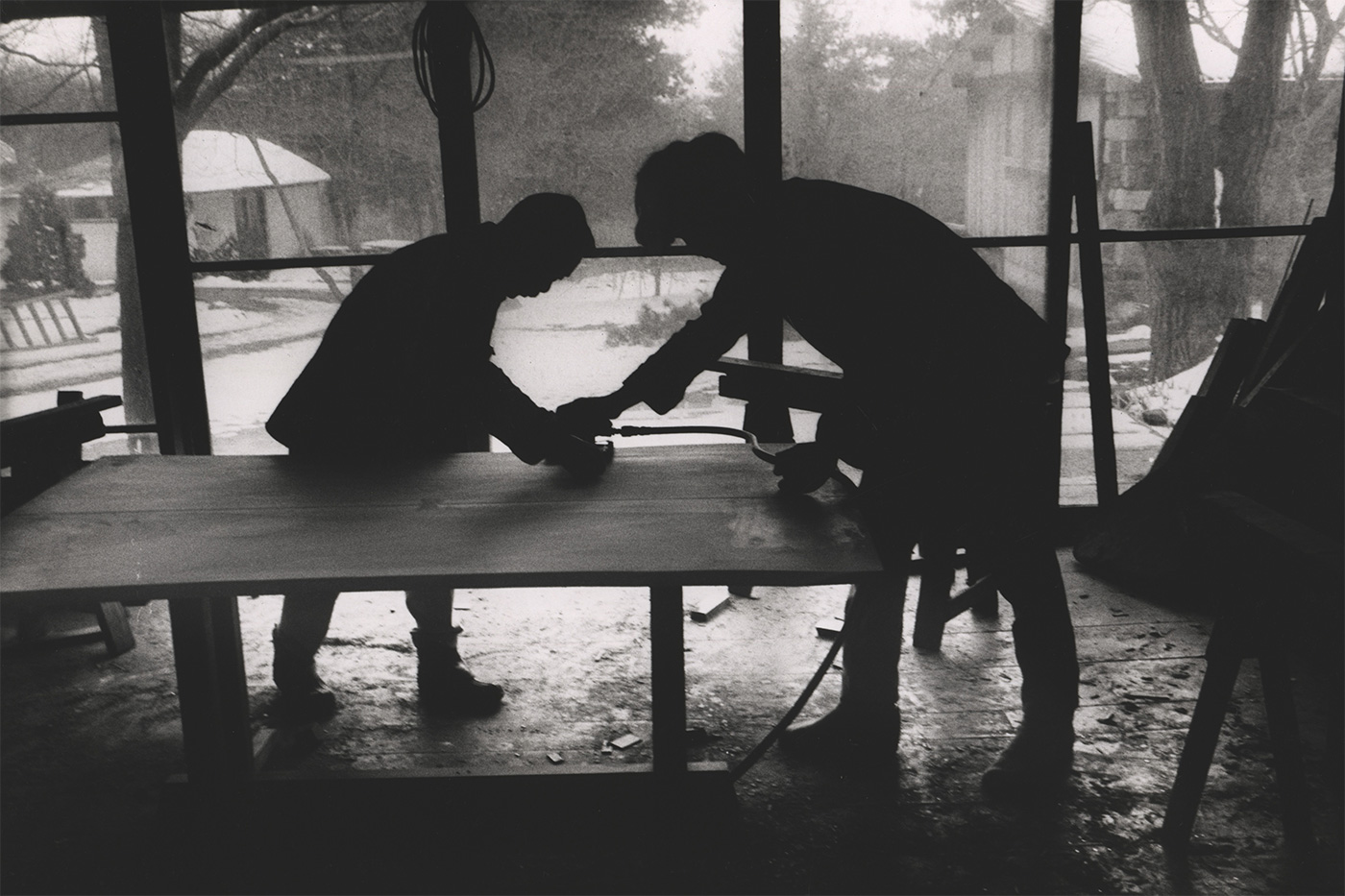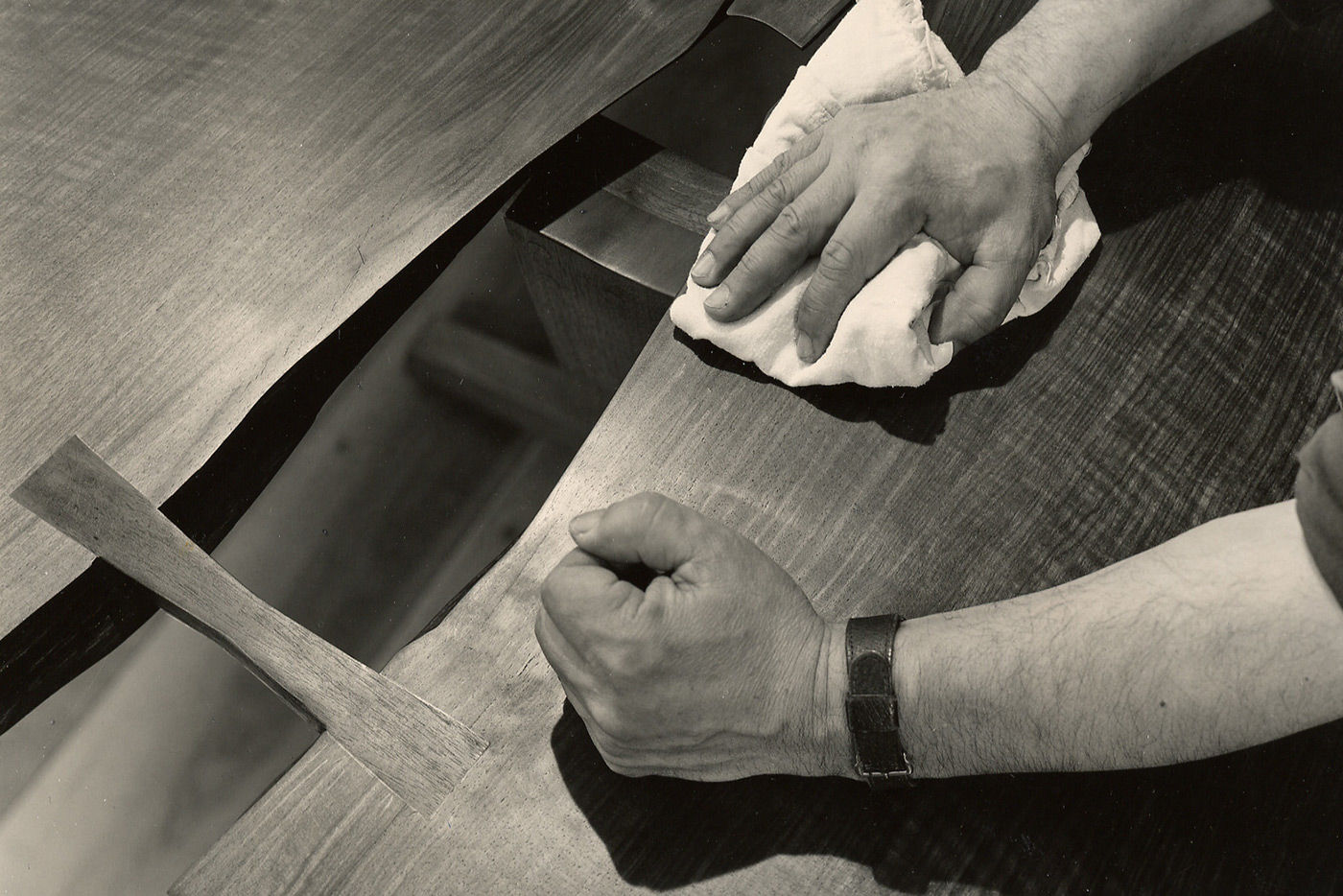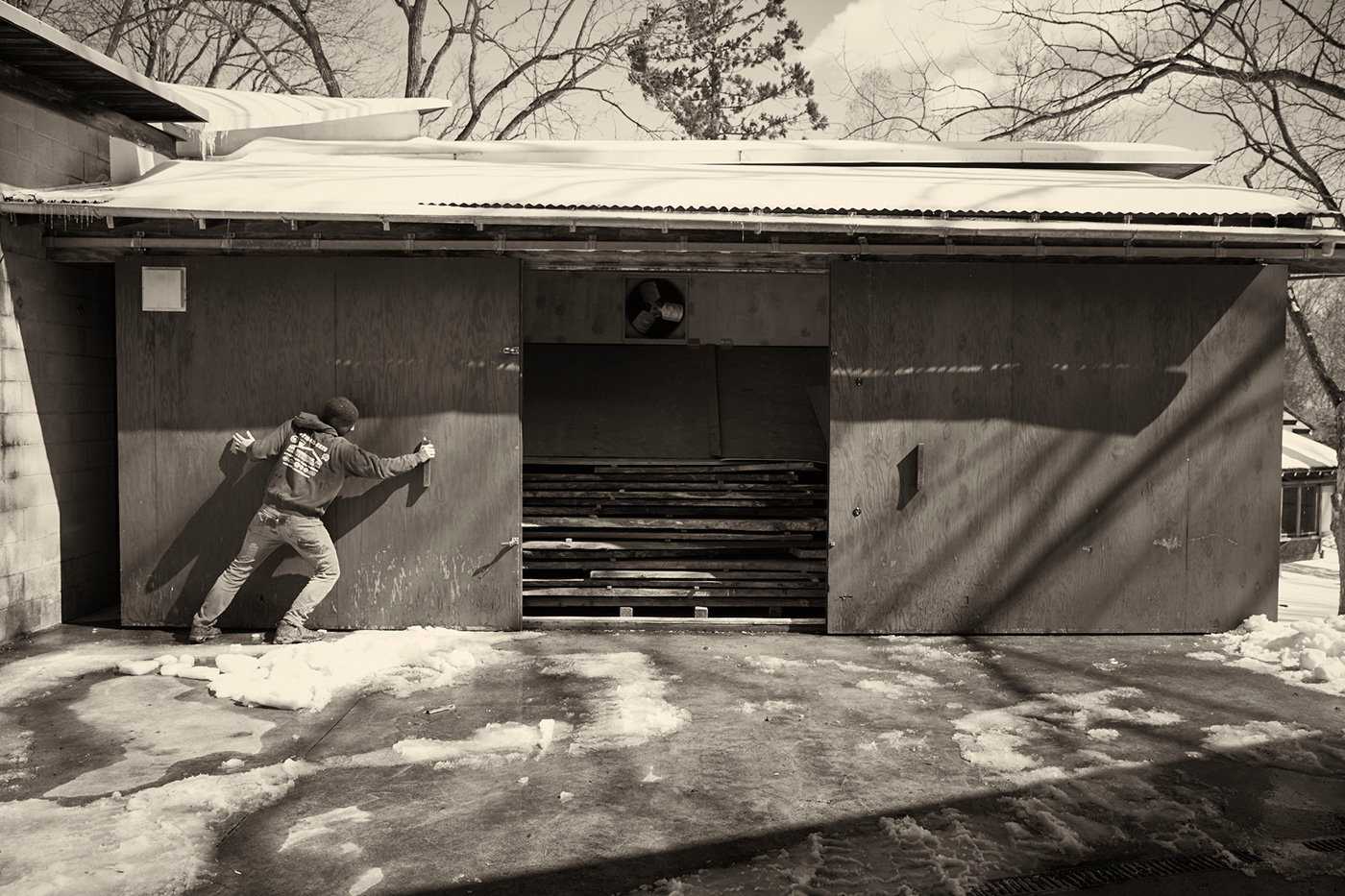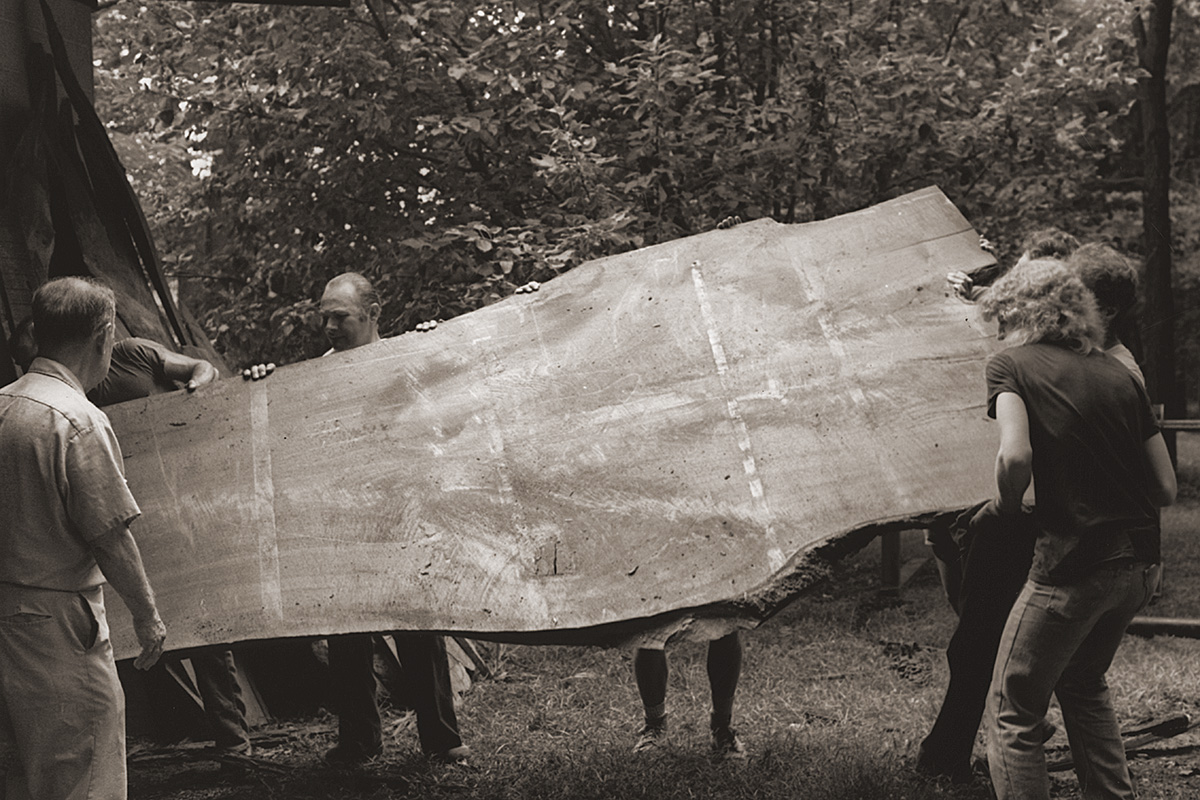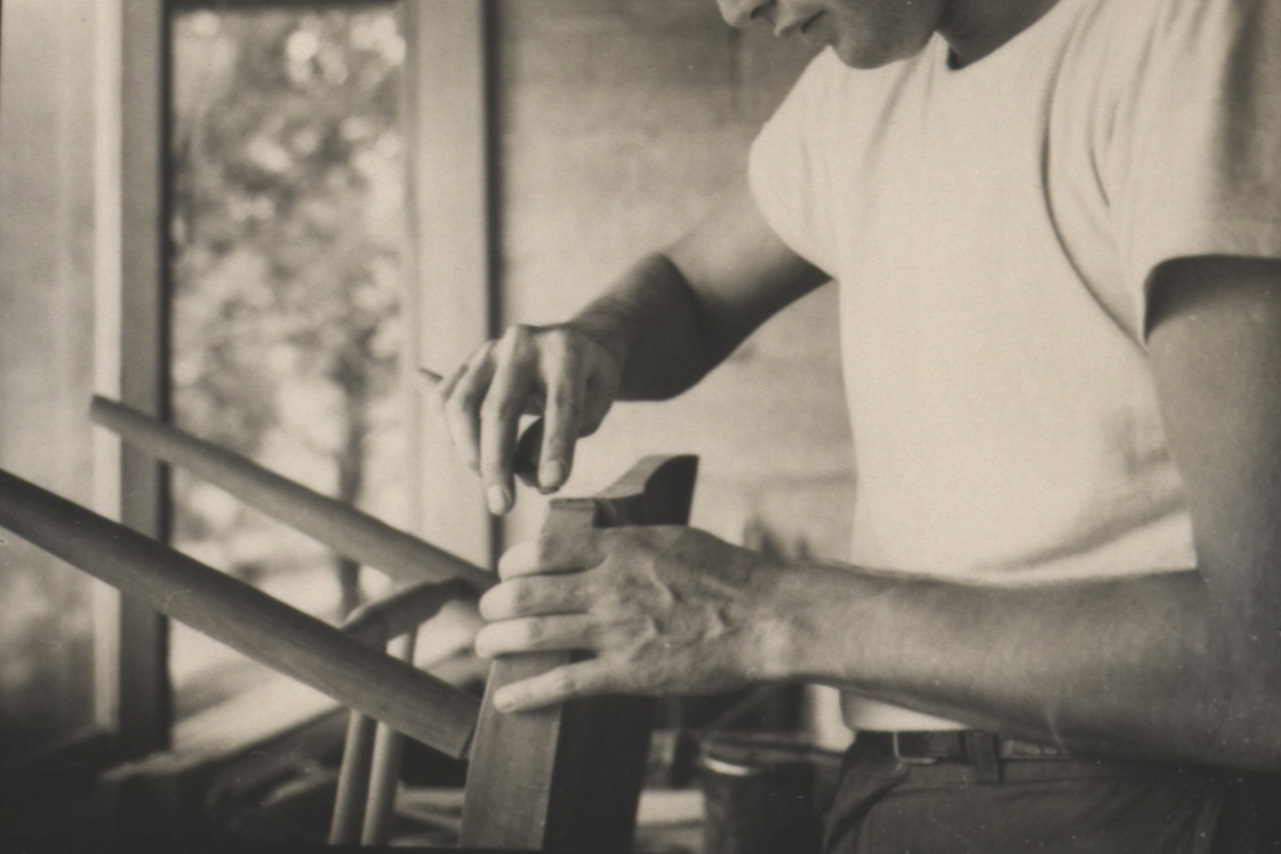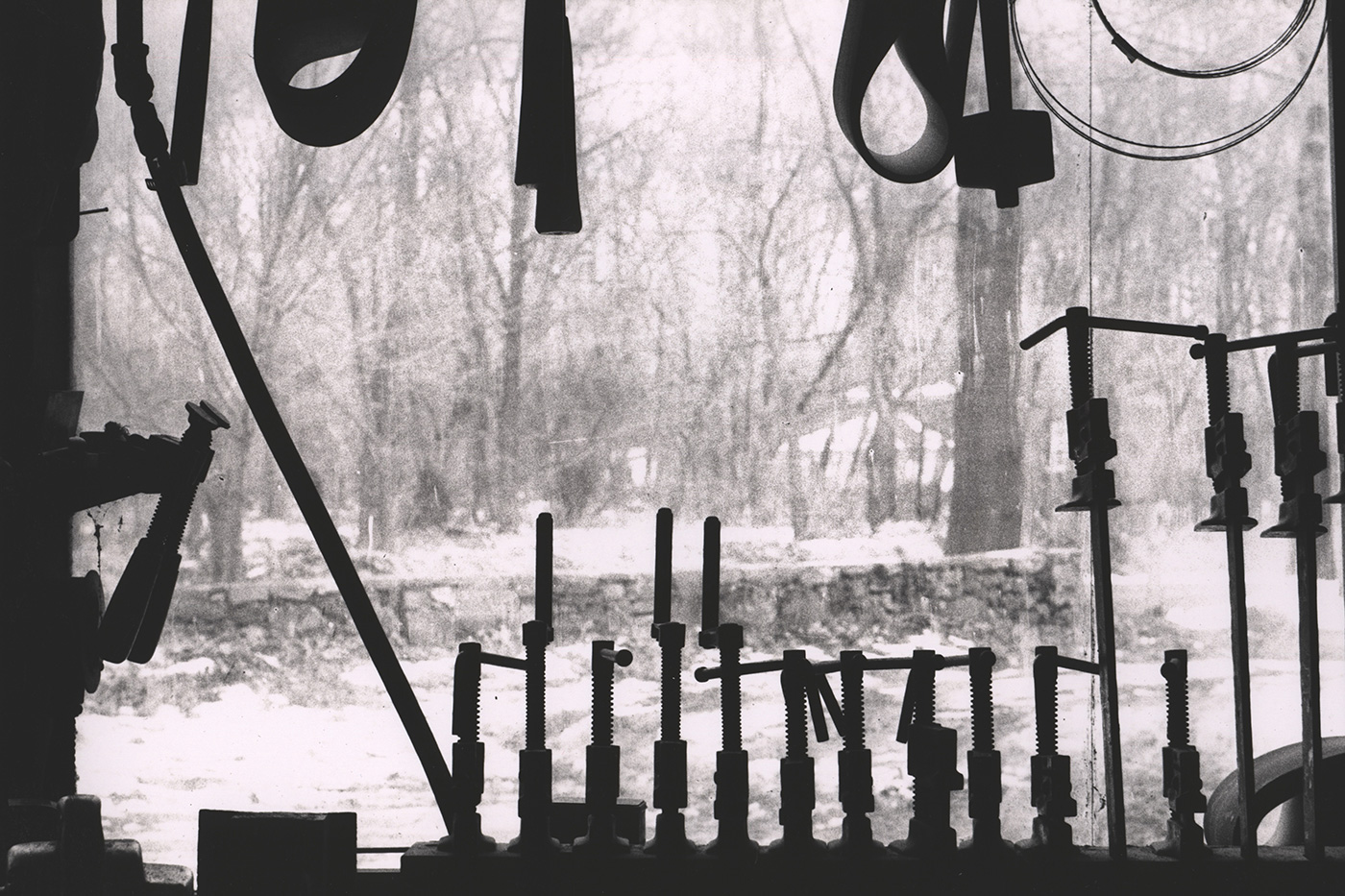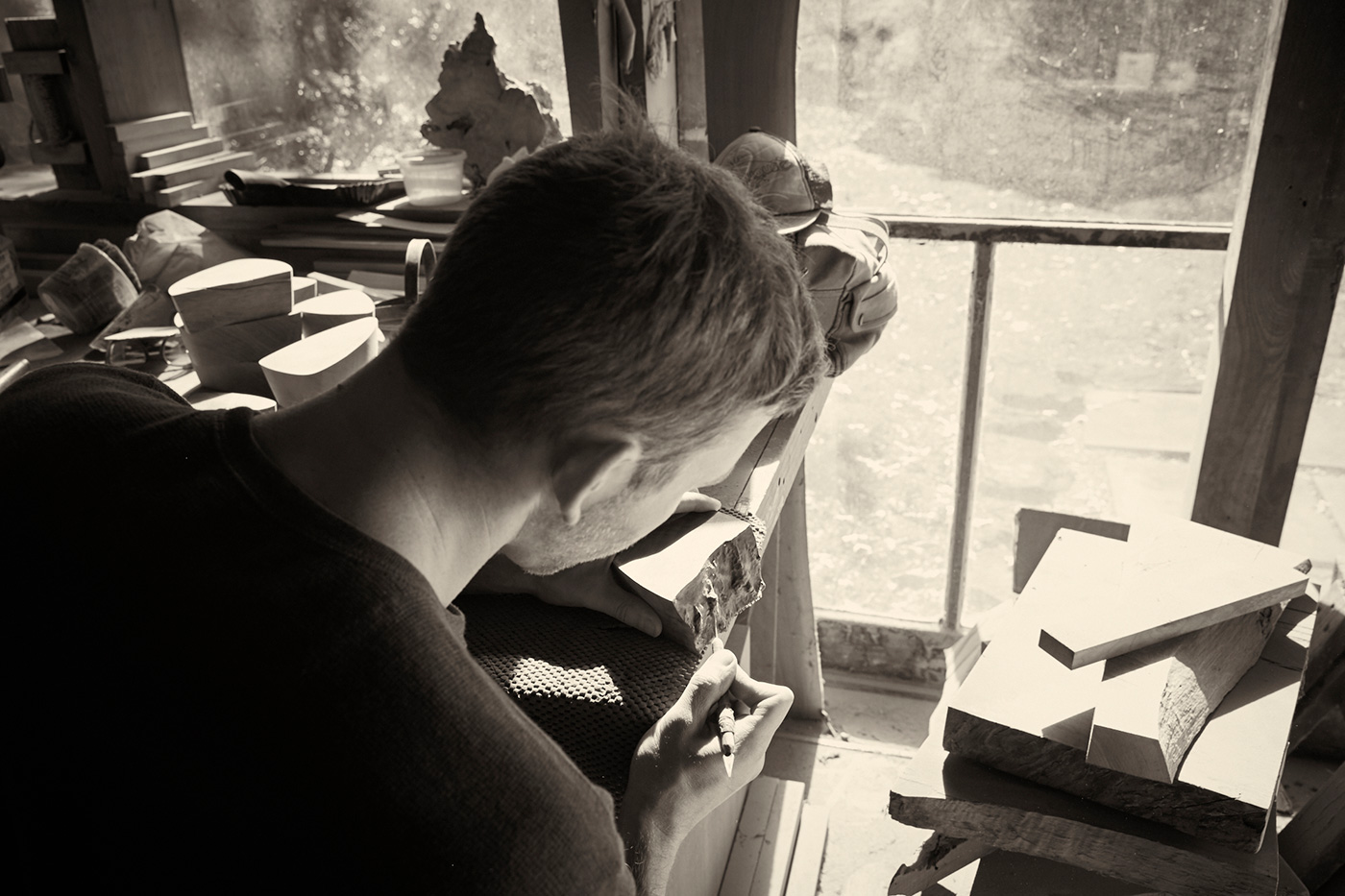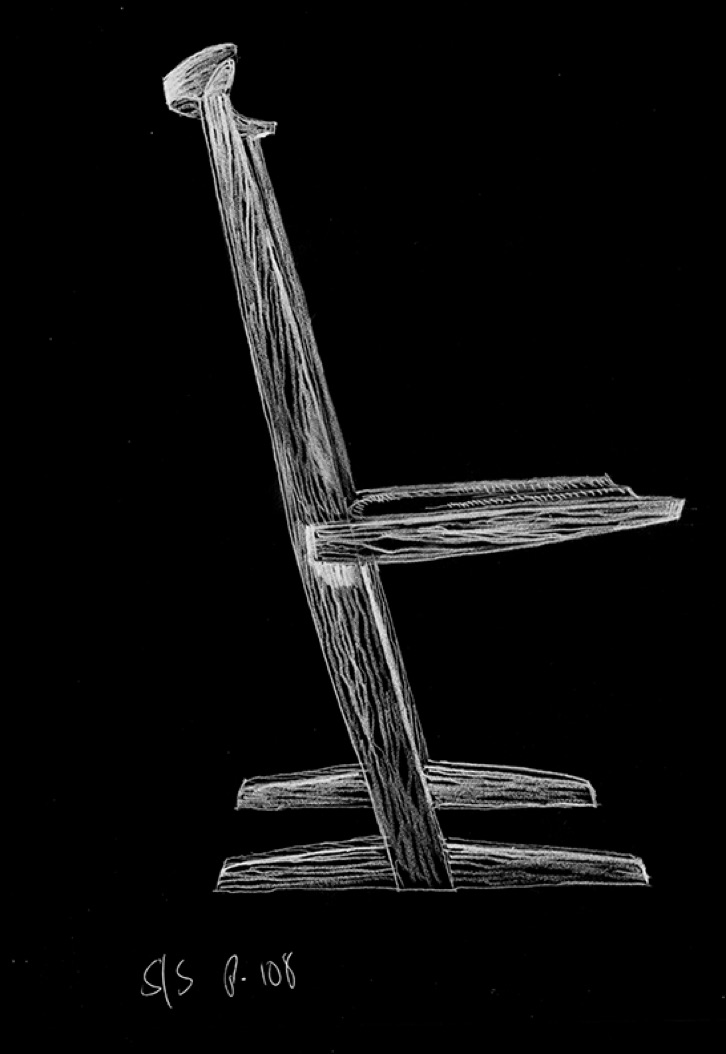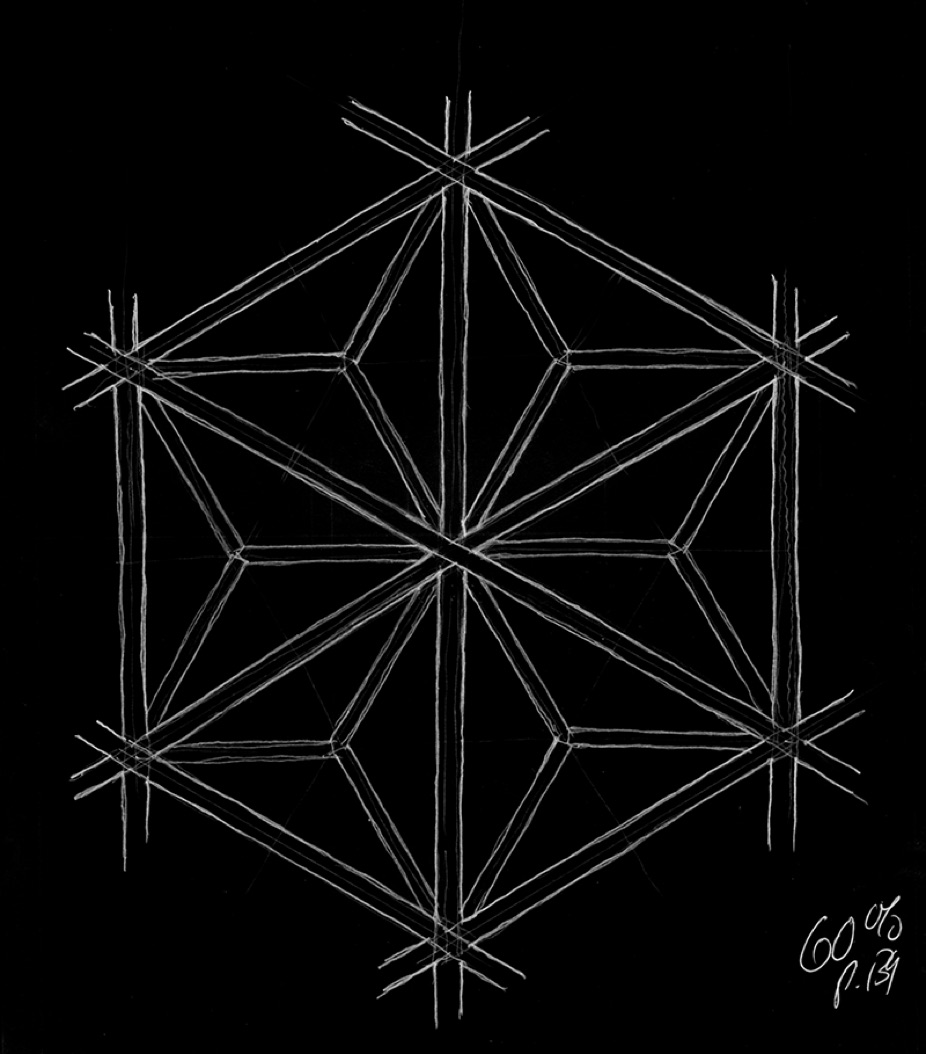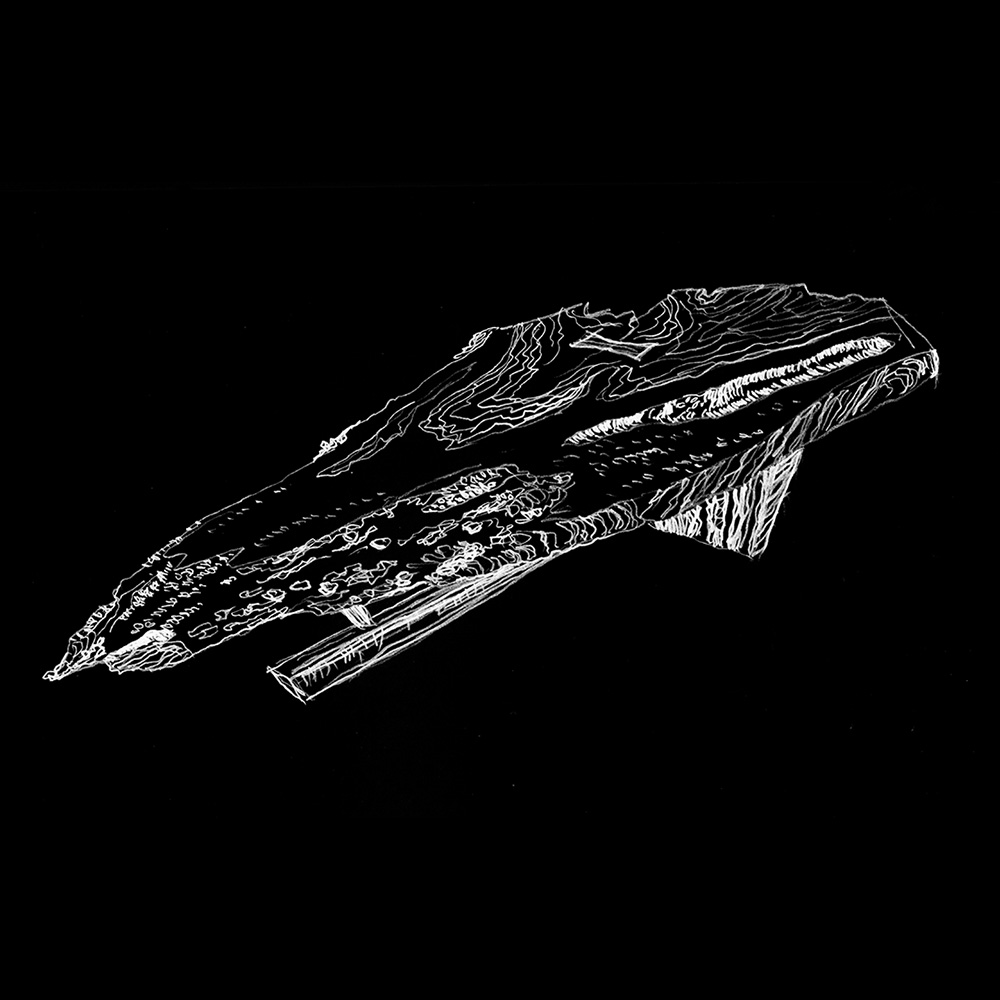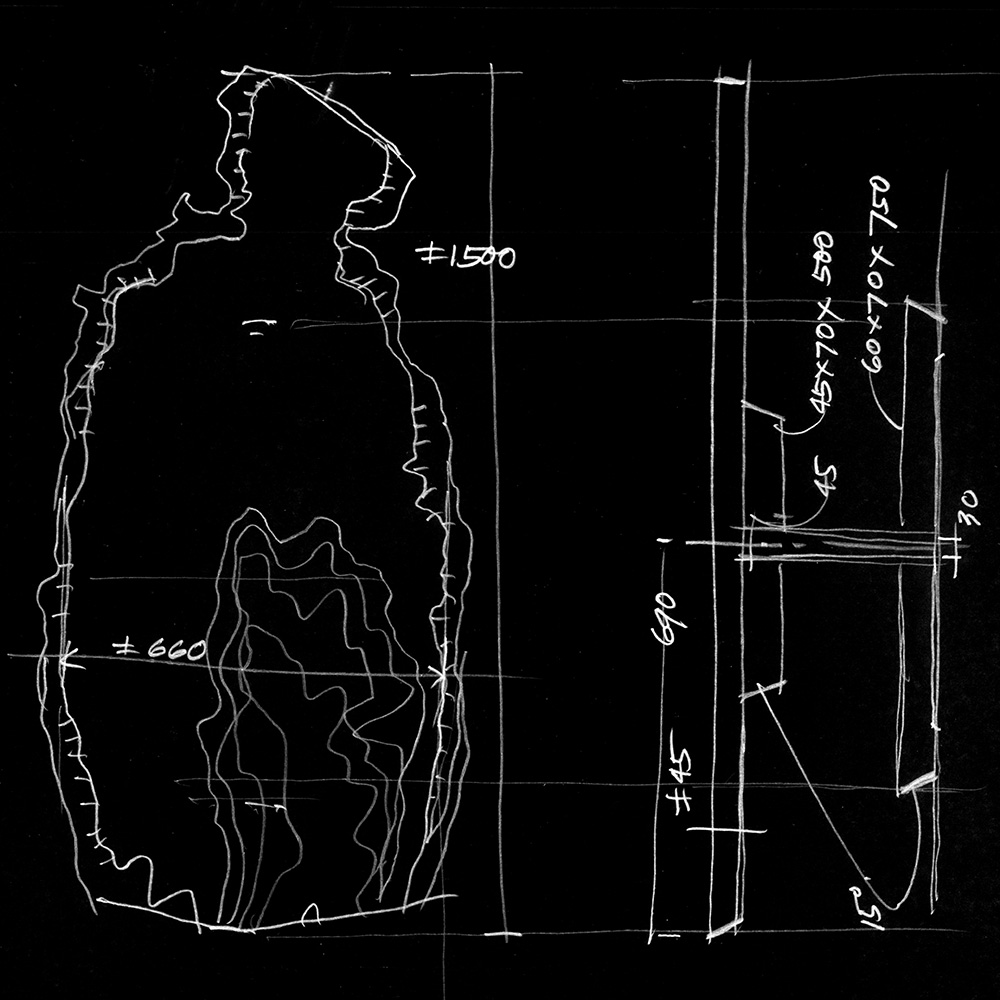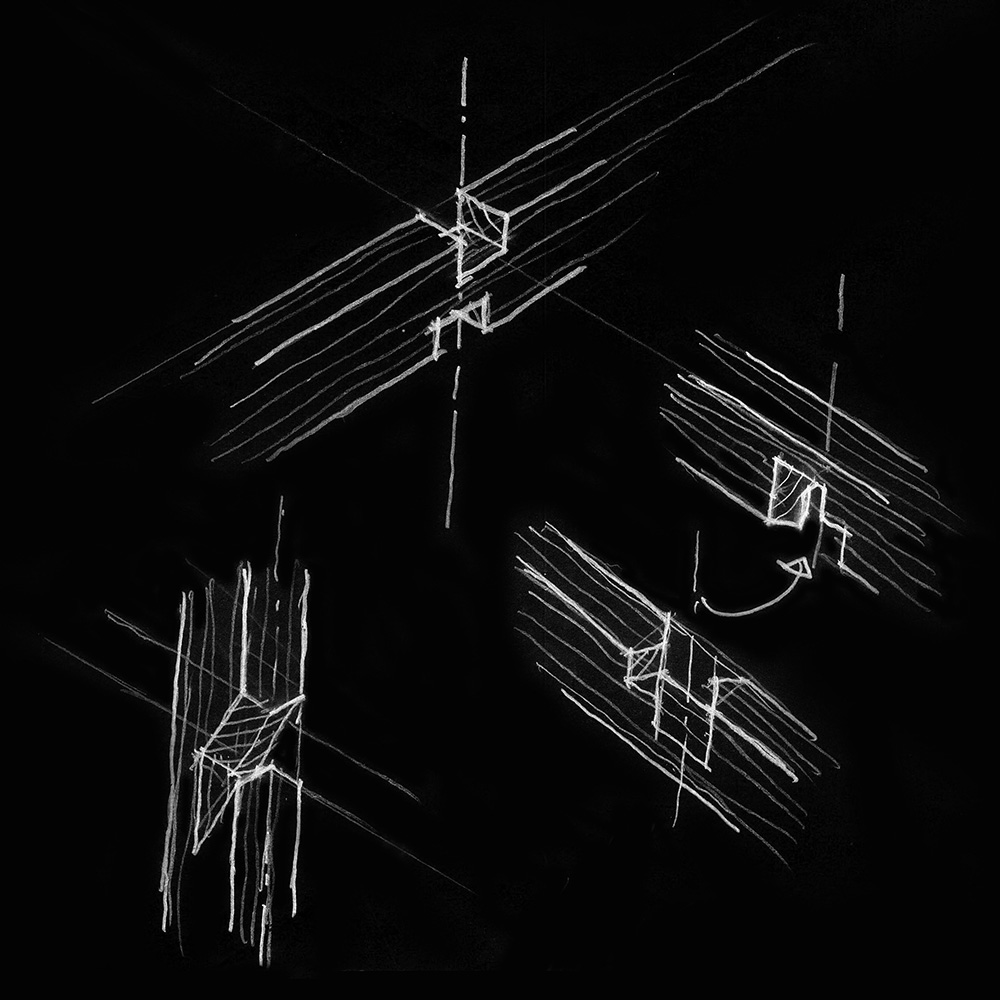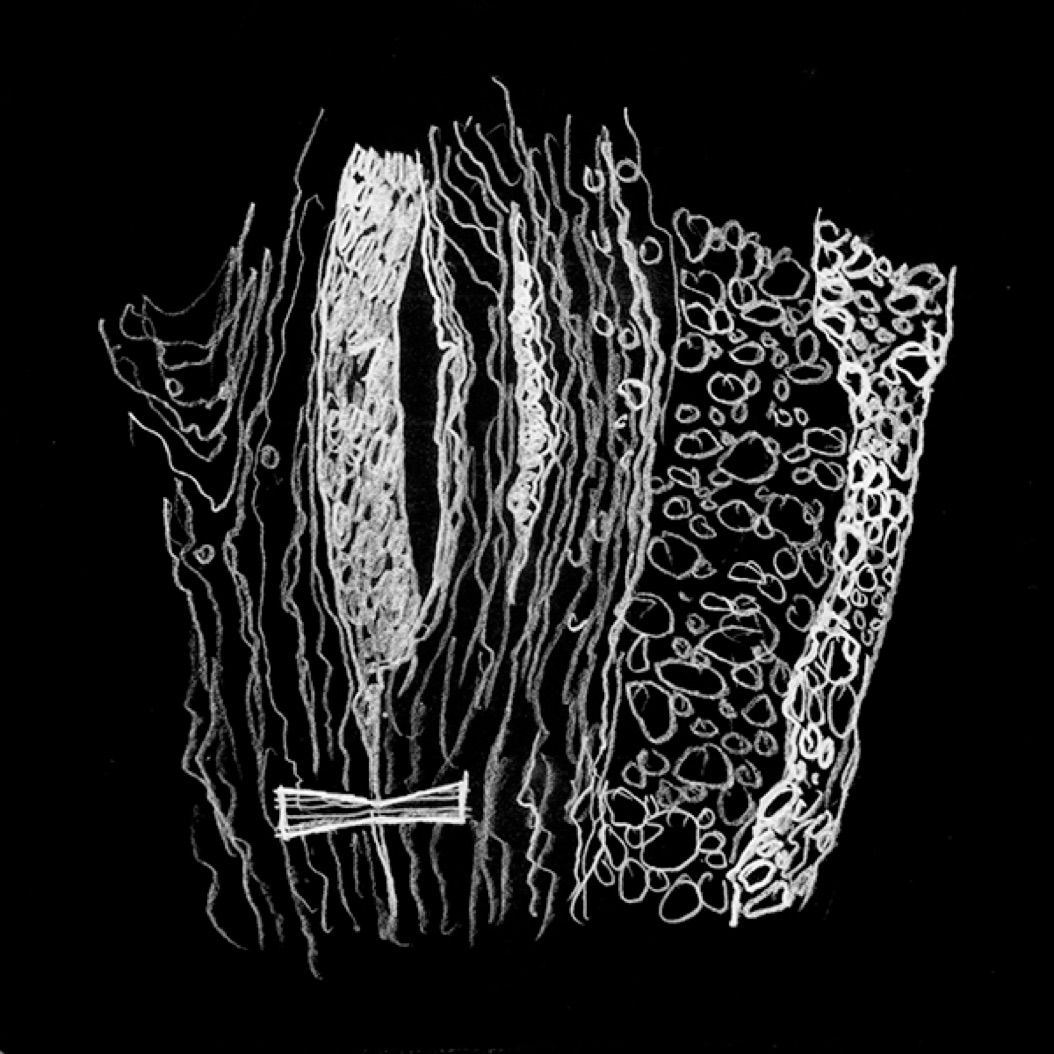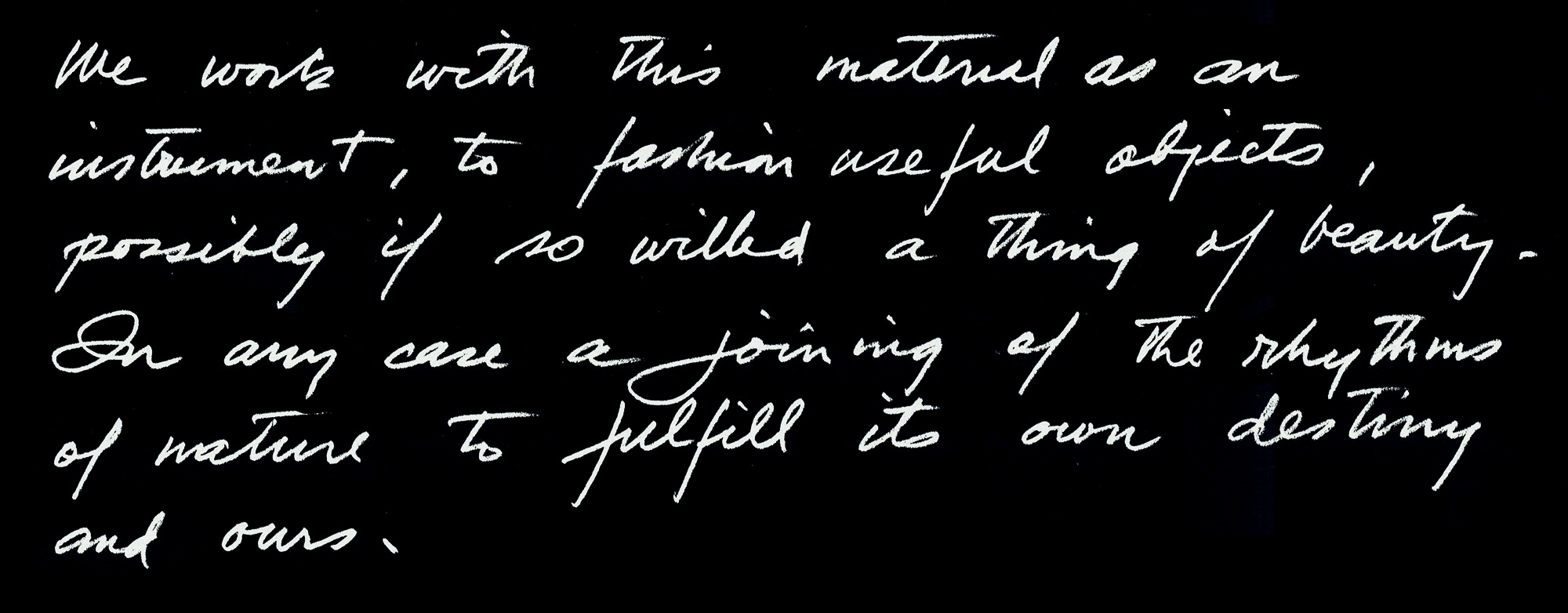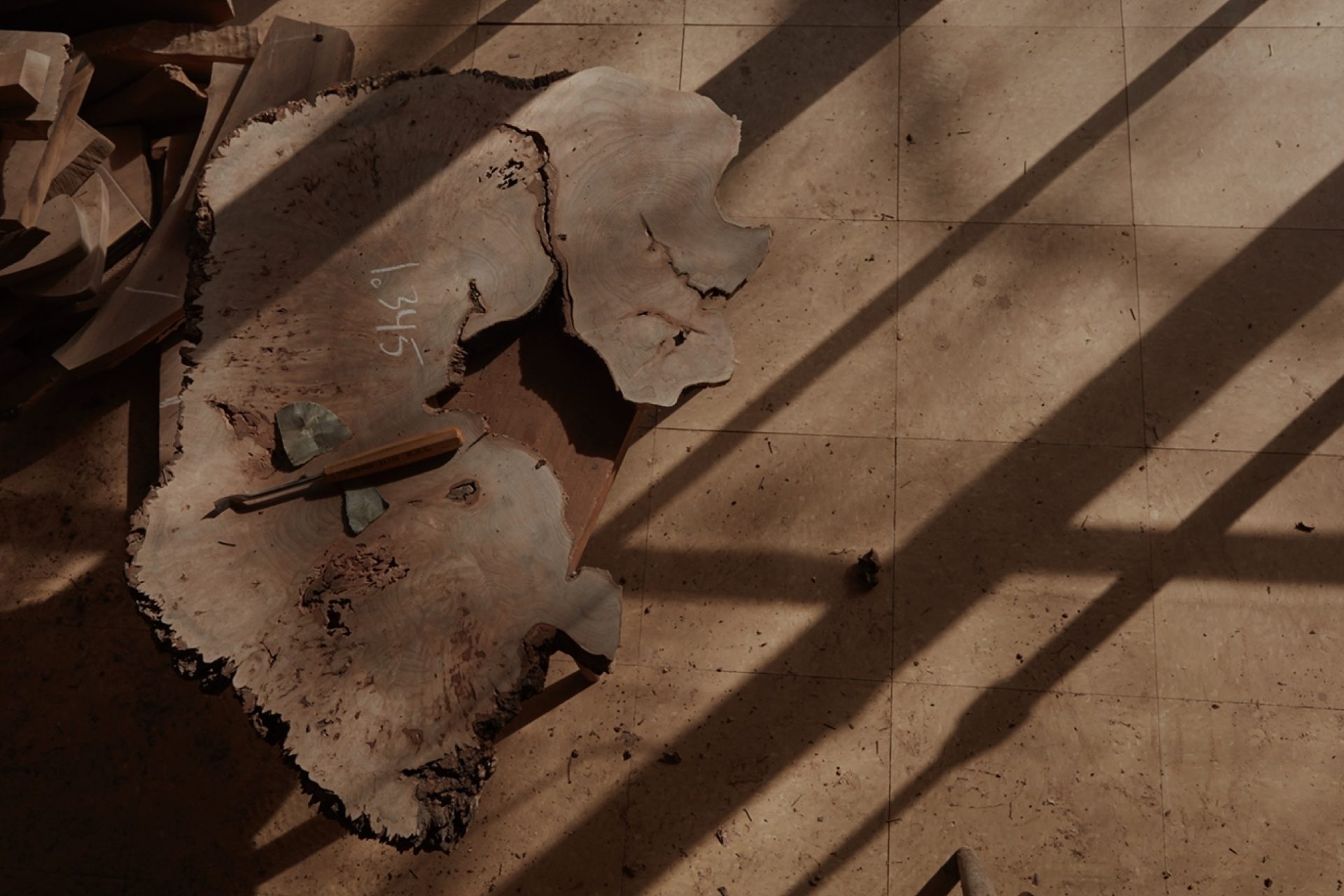
Design Approach
“Our approach is based on direct experience—a way of development outward from an inner core; something of the same process that nature uses in the creation of a tree.”
— George Nakashima
We design based on principles as universal as possible, producing objects without “style,” that are real and utilitarian. The subtlety of the evolvement of the finest materials shaped with intense skill can produce a basic sensitivity.
In a world where manual skills are shunned we believe in them, not only in the act of producing a better product, but in the sheer joy of doing or becoming. We feel that pride in craftsmanship, of doing as perfect a job as possible, of producing something of beauty, even out of nature’s discards.
— George Nakashima“Each flitch, each board, each plank can have only one ideal use. The woodworker, applying a thousand skills, must find that ideal use and then shape the wood to realize its true potential.”
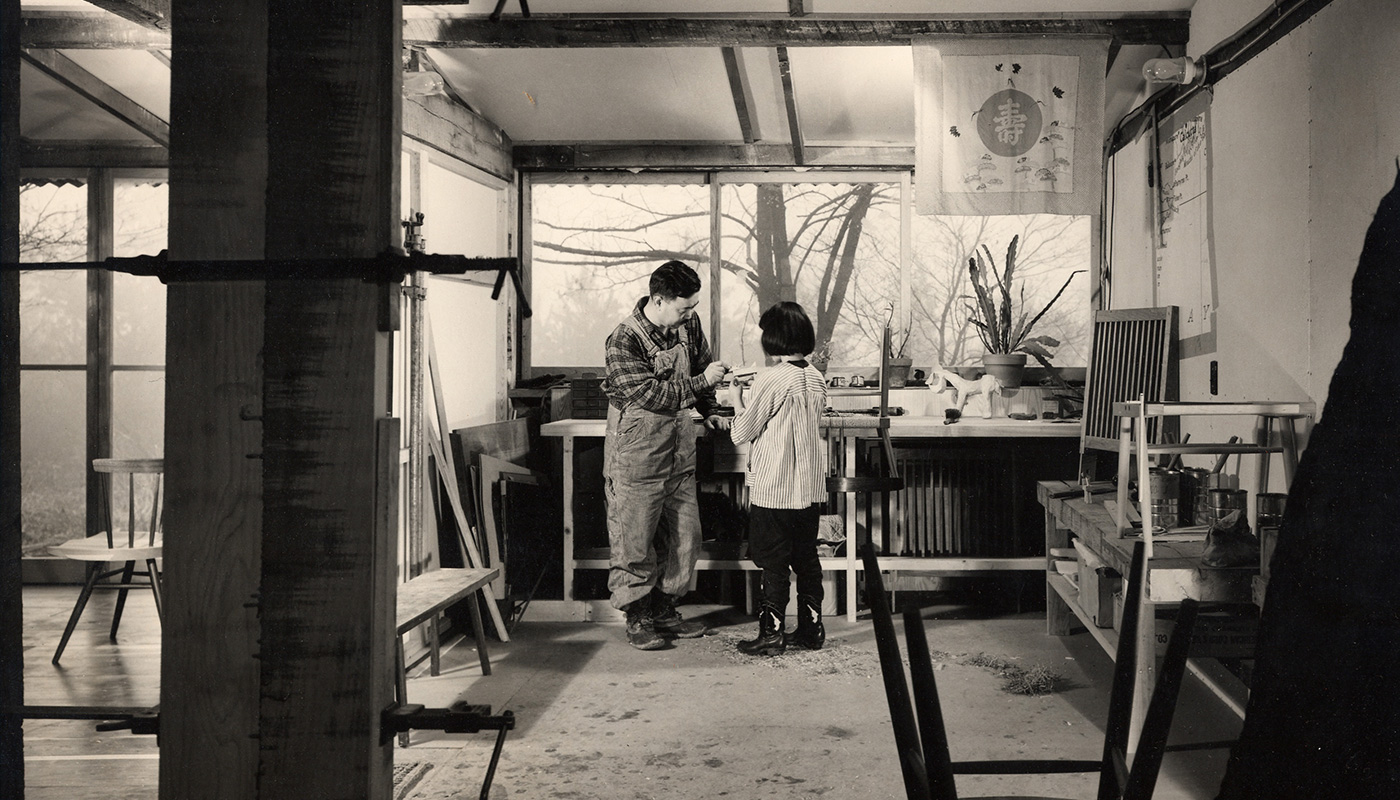
-
Conoid Chair Drawing, George Nakashima
-
The asa-no-ha, or hemp leaf pattern, is ever-present in Japanese design.
-
Minguren Coffee Table Drawing, George Nakashima
-
Shop Drawing, George Nakashima
-
Sketch of traditional Japanese architectural joinery, George Nakashima
-
Board with Butterfly Drawing, George Nakashima
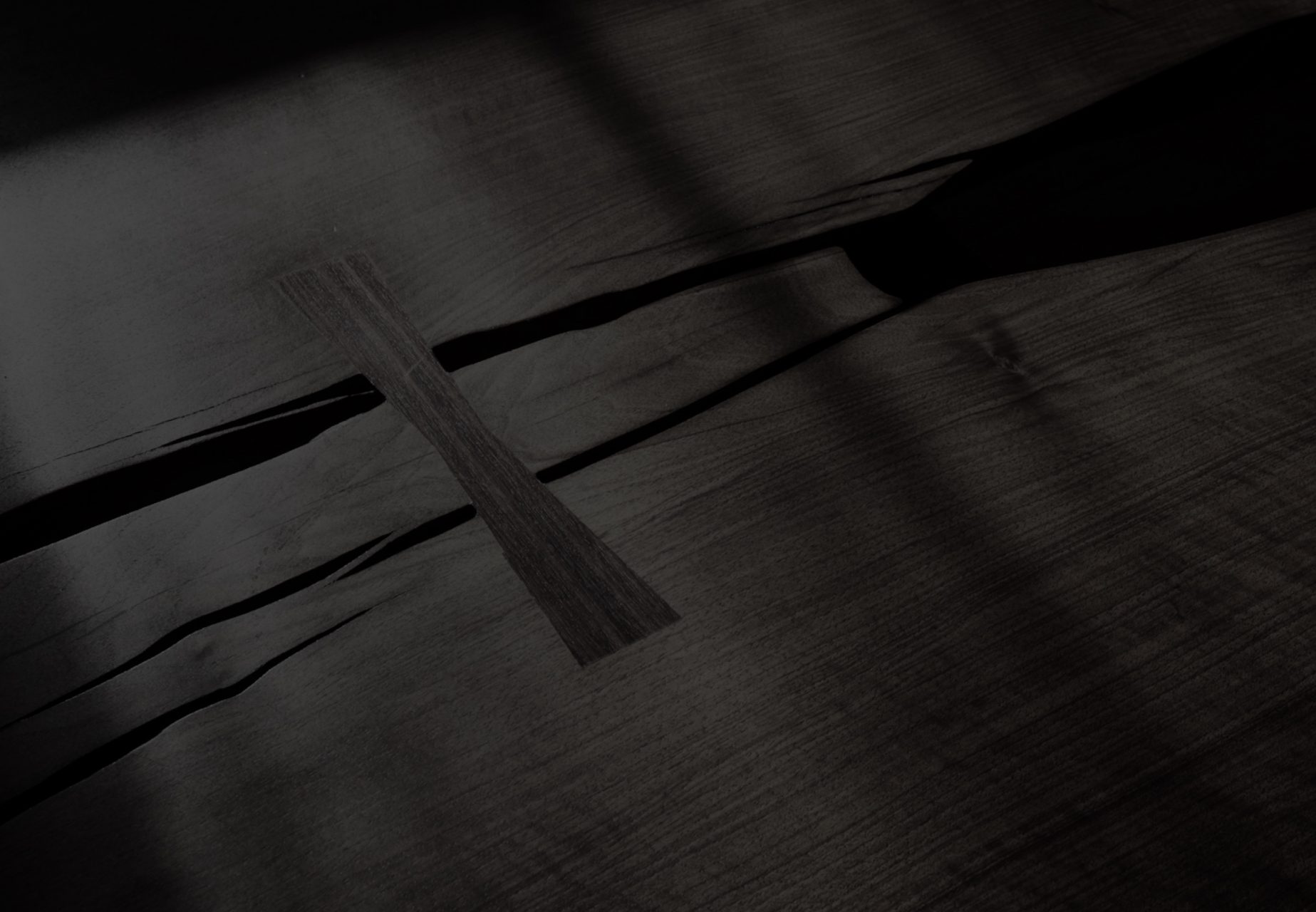
-
Inspiration
-
Design Legacy
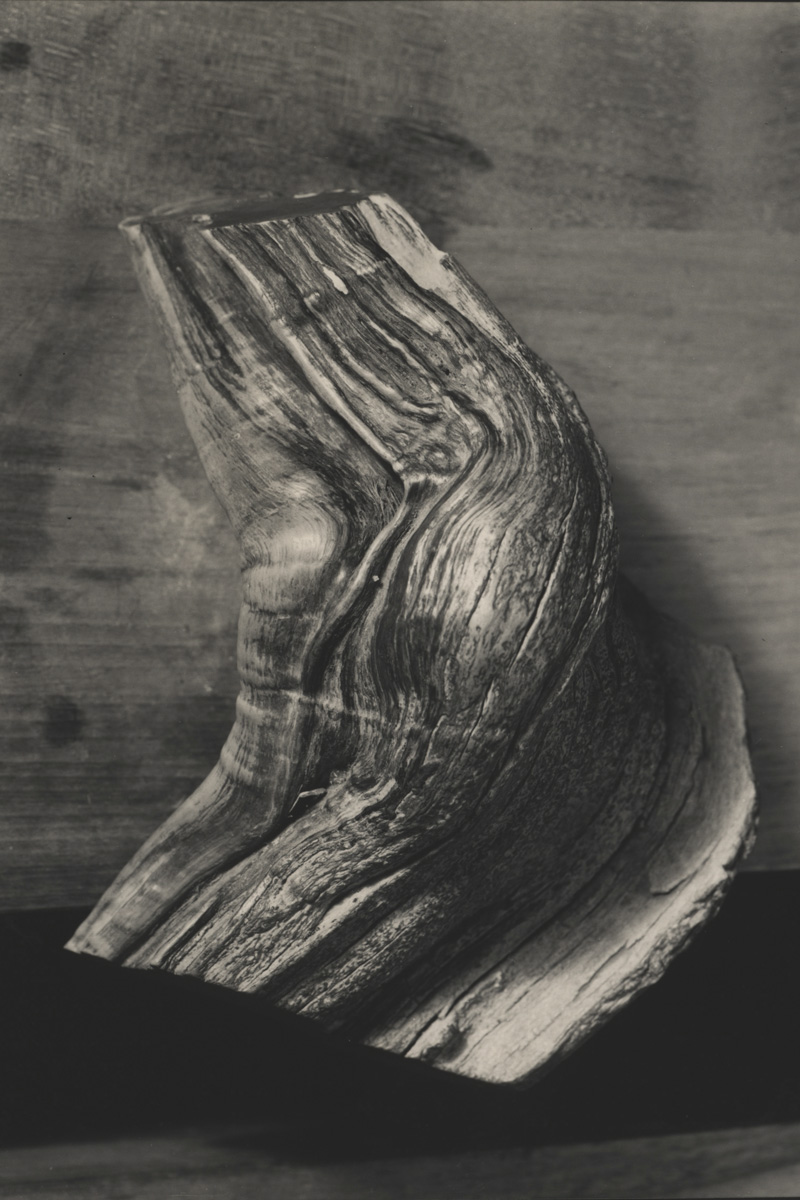
Shibui, Wabi, Sabi
In Japanese, “shibui” literally means astringent, like an unripe persimmon, and it is that tautness of line, the strict, spare use of material, which translates directly into our work. “Wabi” means quiet, solitary, as is the life of a hermit monk. It enables one to hear the “still, small voice within.” “Sabi” means rusty, antique, patinated—and, by extension, elegantly simple. These three concepts were introduced to the West after World War II; they describe the flavor and effect of every Nakashima piece.
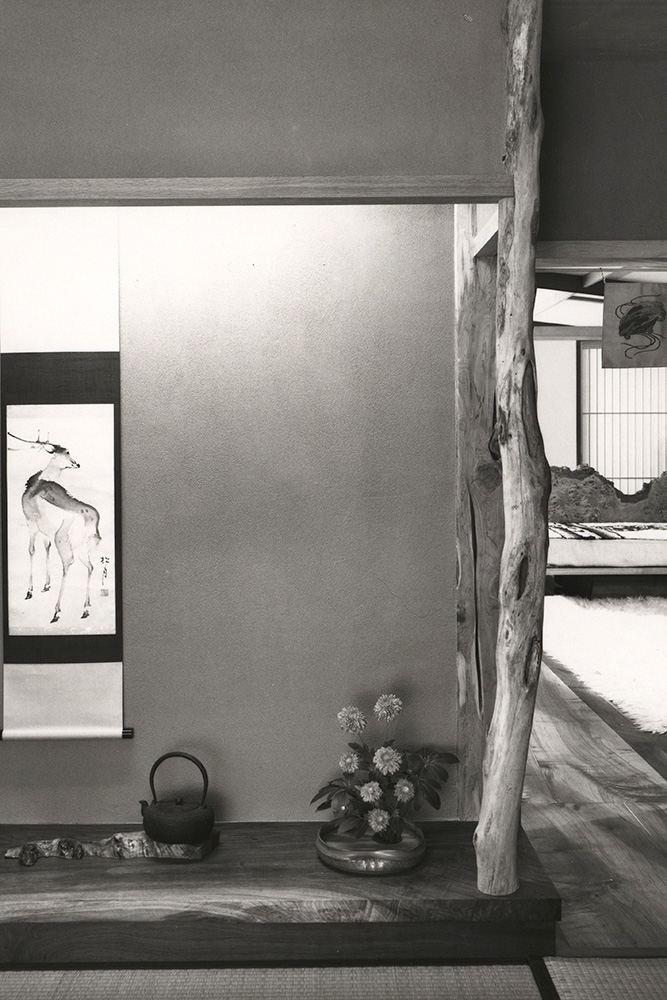
The Way of Tea
As with many Japanese art forms, the tea ceremony is rooted in Zen Buddhism. Performed in a strictly prescribed way and enacted through nonverbal communication, the preparation, serving, and receiving of tea are representative of true hospitality and humility. The philosopher Soetsu Yanagi emphasizes that, in the same way a tea master performs a tea ceremony, true craftspeople do not talk; they are so concentrated on their work that they do not need words. The work speaks for itself, hence why George refused to sign his furniture until the 1980s.
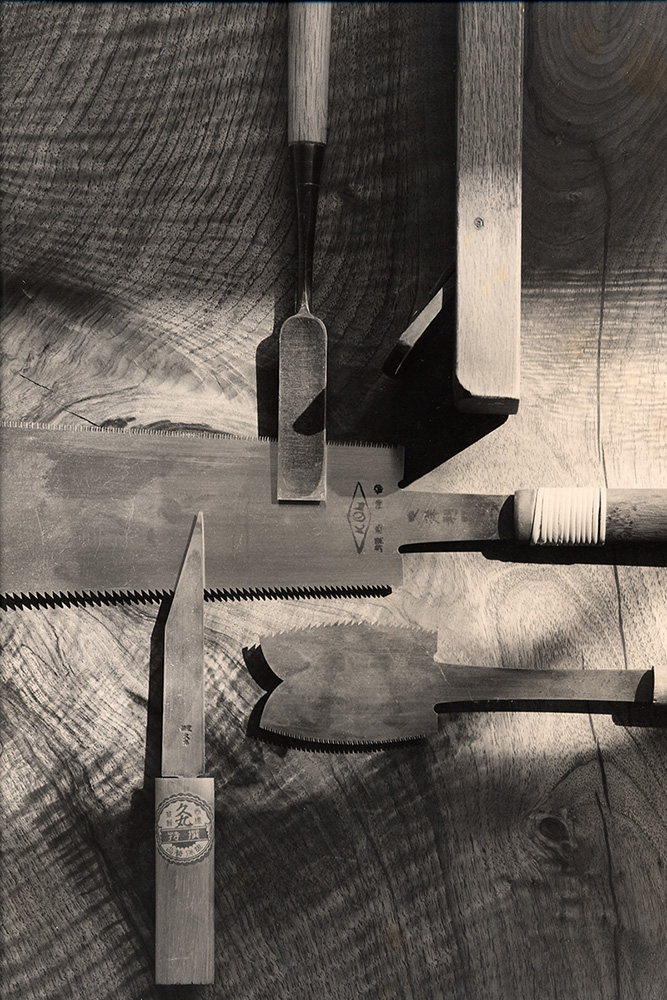
Japanese Joinery
Japanese joinery is a highly developed technique, formalized and exact. Each type of joint has a name, and each joining procedure follows a precise and proper order. The work is done by hand with tools of an excellence that is rare in the West, tools to meet every joint requirement. Our deep respect for the tree, which should enjoy a seamless and natural line, impels us to master the difficult art of joinery.
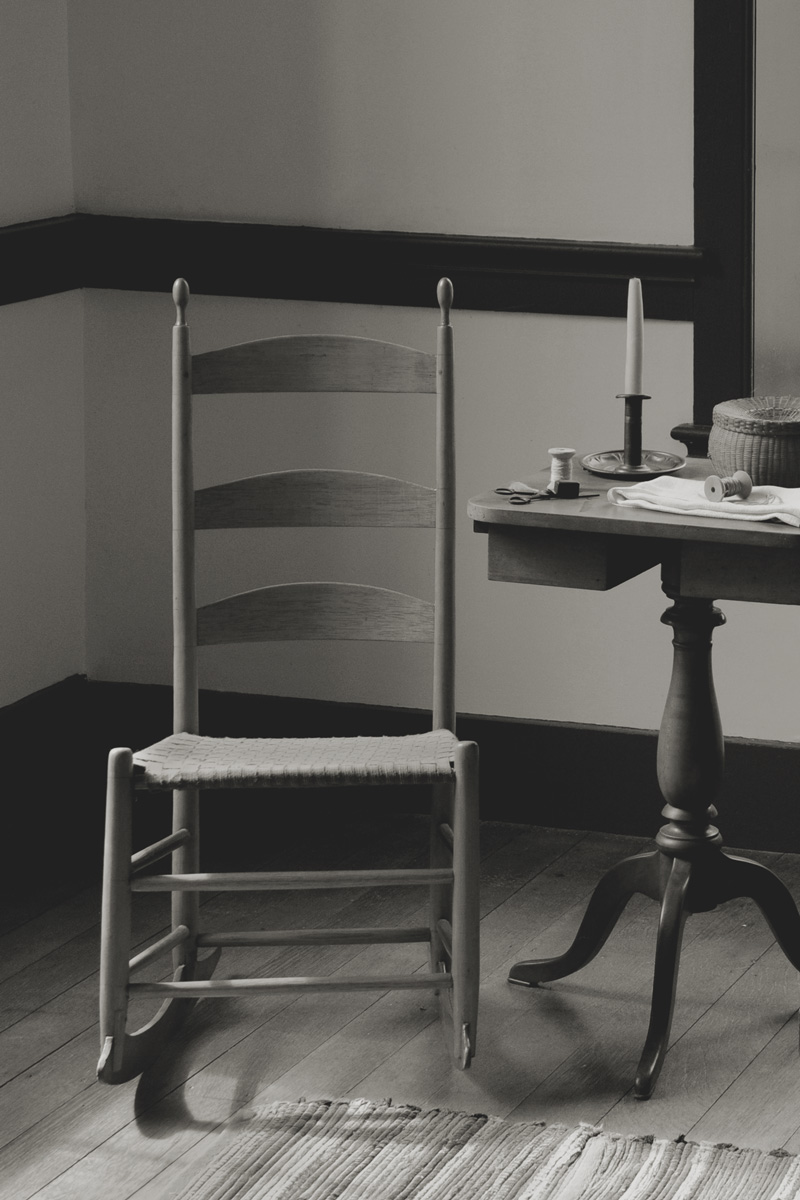
The Shaker Tradition
The Shakers believed in simplicity with no frivolity or decoration, other than the natural grain of the wood itself. Everything was put to practical use and valued for its functionality; this discipline resulted in minimalist, beautifully simple forms. George was very appreciative of and sympathetic to the Shaker way of life, and he embodied these ideals in his work, as we continue to do today.
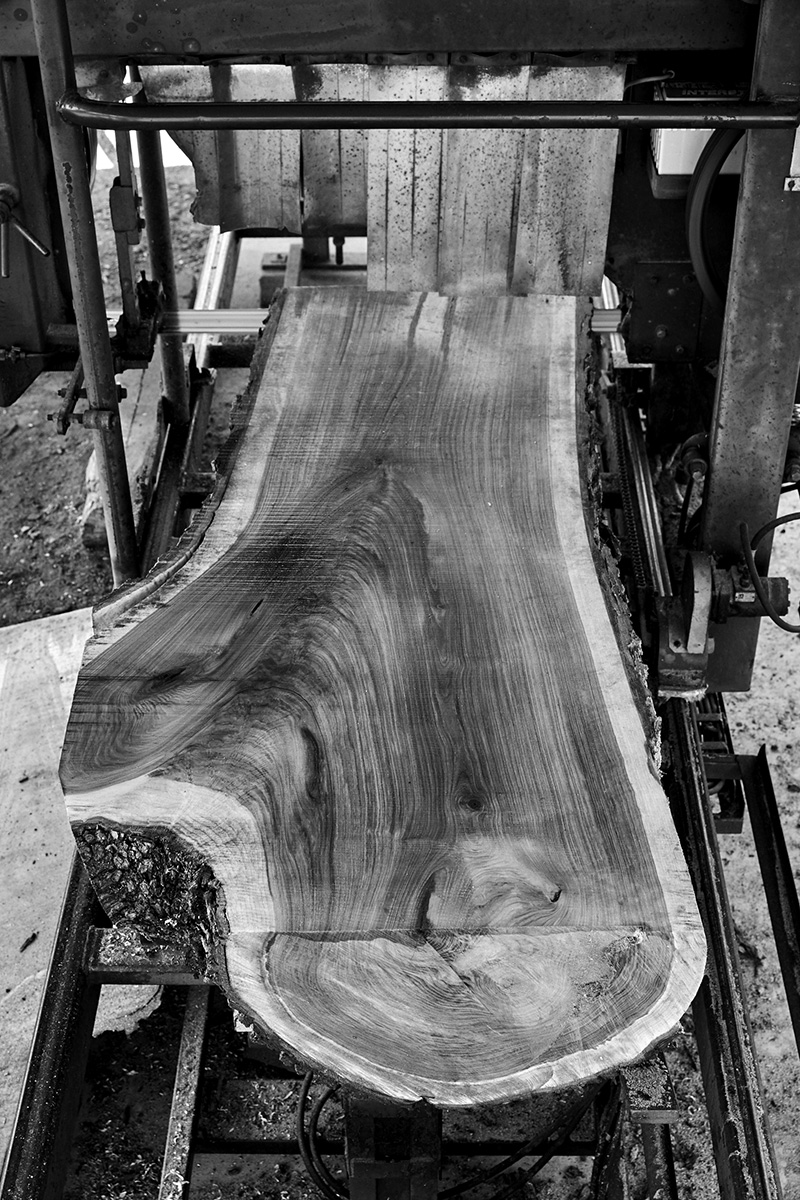
Cutting Through-and-Through
George pioneered the practice of cutting logs “through-and-through,” leaving all the natural forms of the wood, its flaws, and bark intact. Before this innovation, most sawyers would cut off the irregularities and quarter-saw lumber for maximum stability, but George saw beauty in the imperfect, natural forms and sought to preserve them in the milling process.
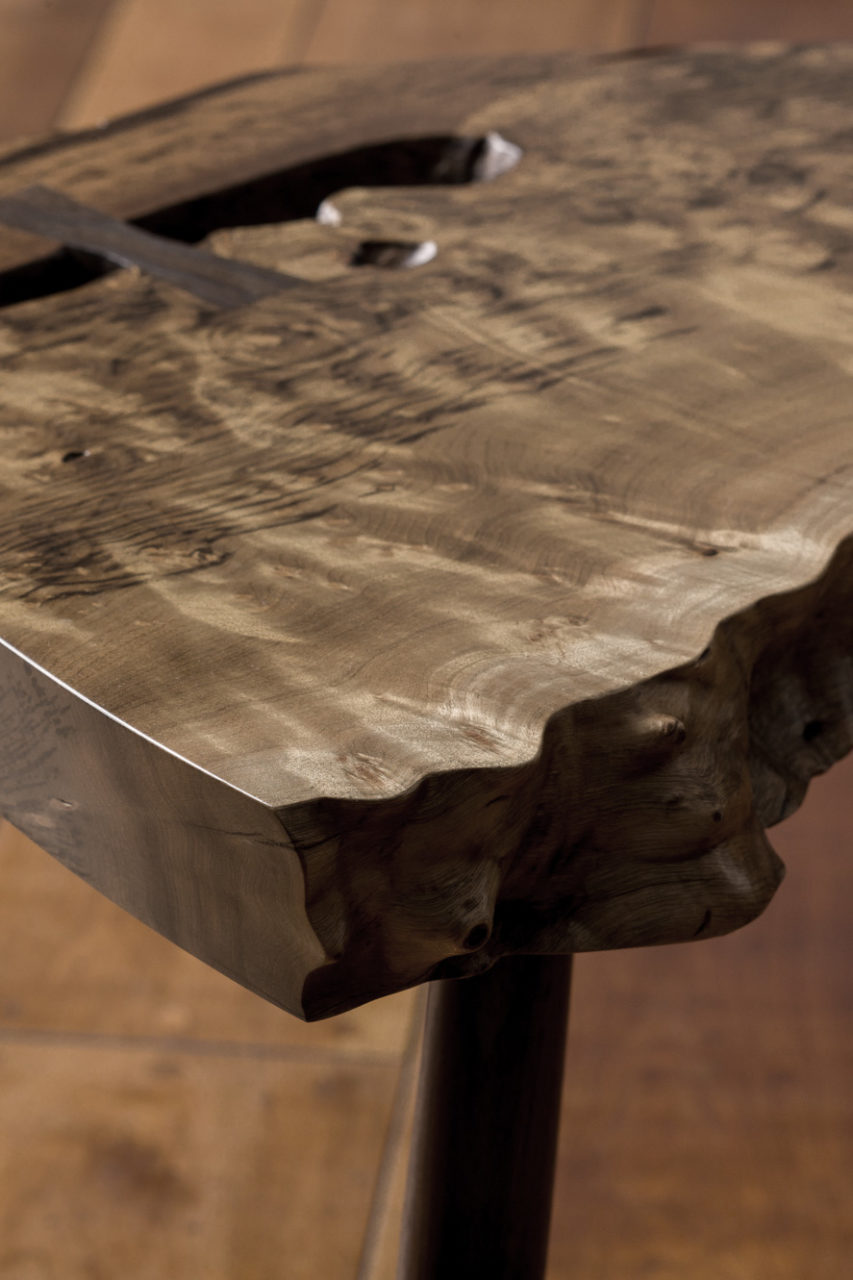
The Free Edge
As a result of the “through-and-through” milling process, Nakashima Woodworkers redefined the meaning of “free-form”; no longer did it reference a man-made form, but a form created by nature itself. George may have also coined the term “free edge,” which has since been modified to “live edge” in today’s furniture industry, and which lends a completely unique, signature organic expressiveness to our designs.
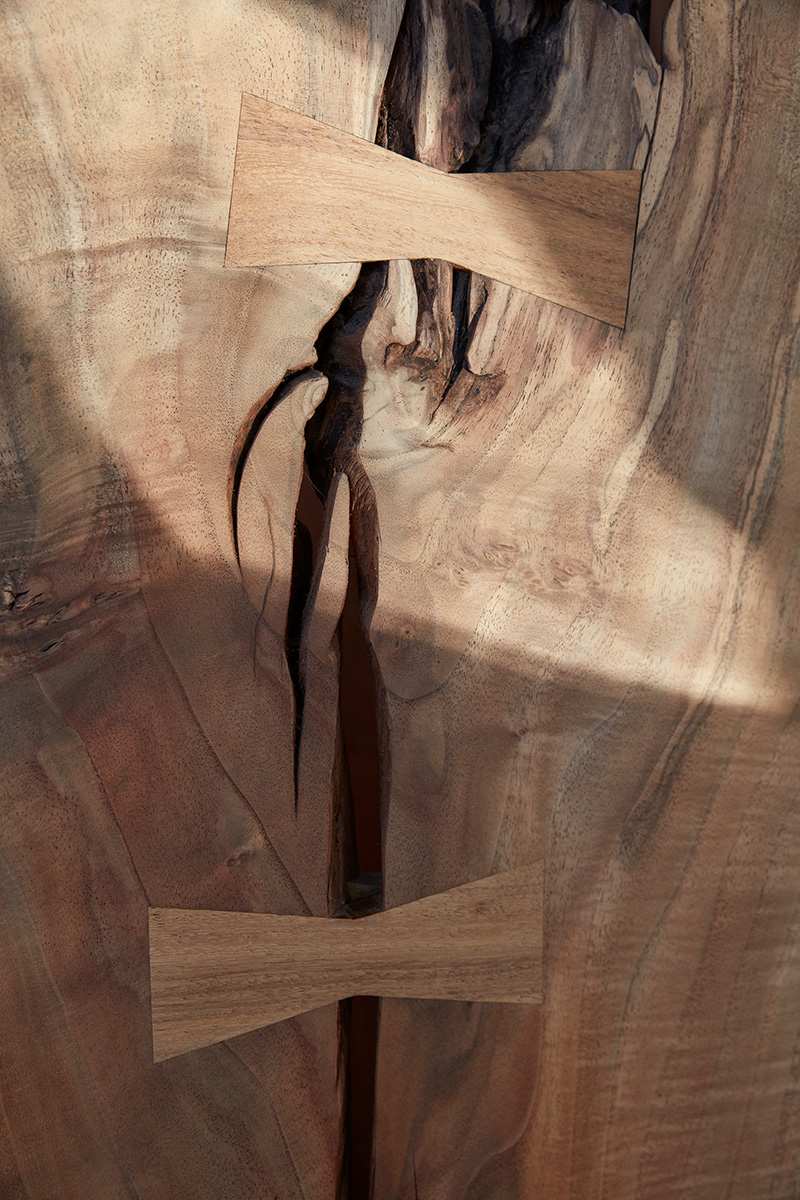
Butterflies and Dovetails
Butterfly joints existed long before George Nakashima; they were commonly used for centuries in Europe and Japan. George’s innovation was to expose them and dovetail joints as important elements of furniture design, just as structural elements in traditional Japanese architecture become integral to a building’s aesthetic impact. Butterfly inlays and dovetail corners are carefully finished and fitted by hand.
